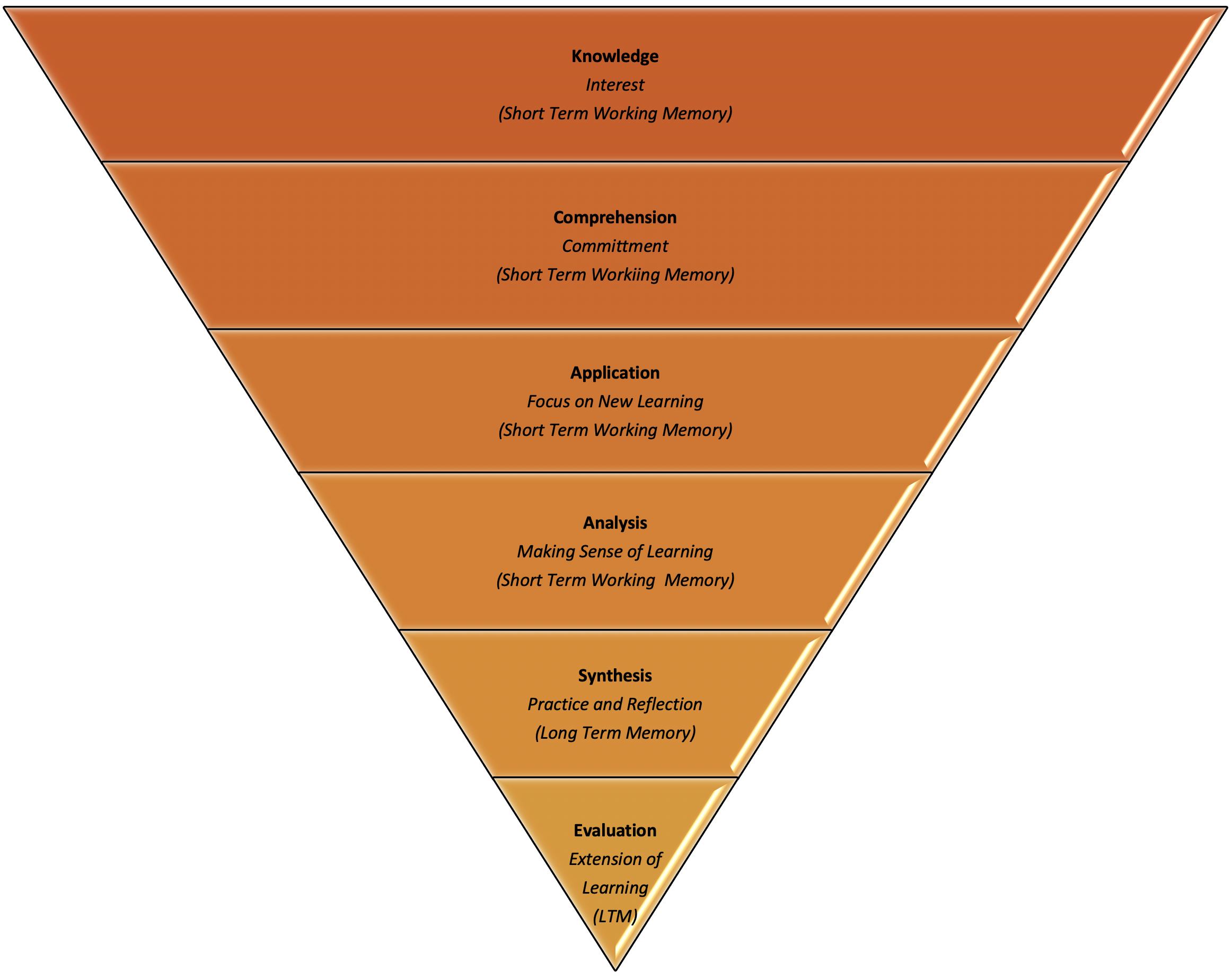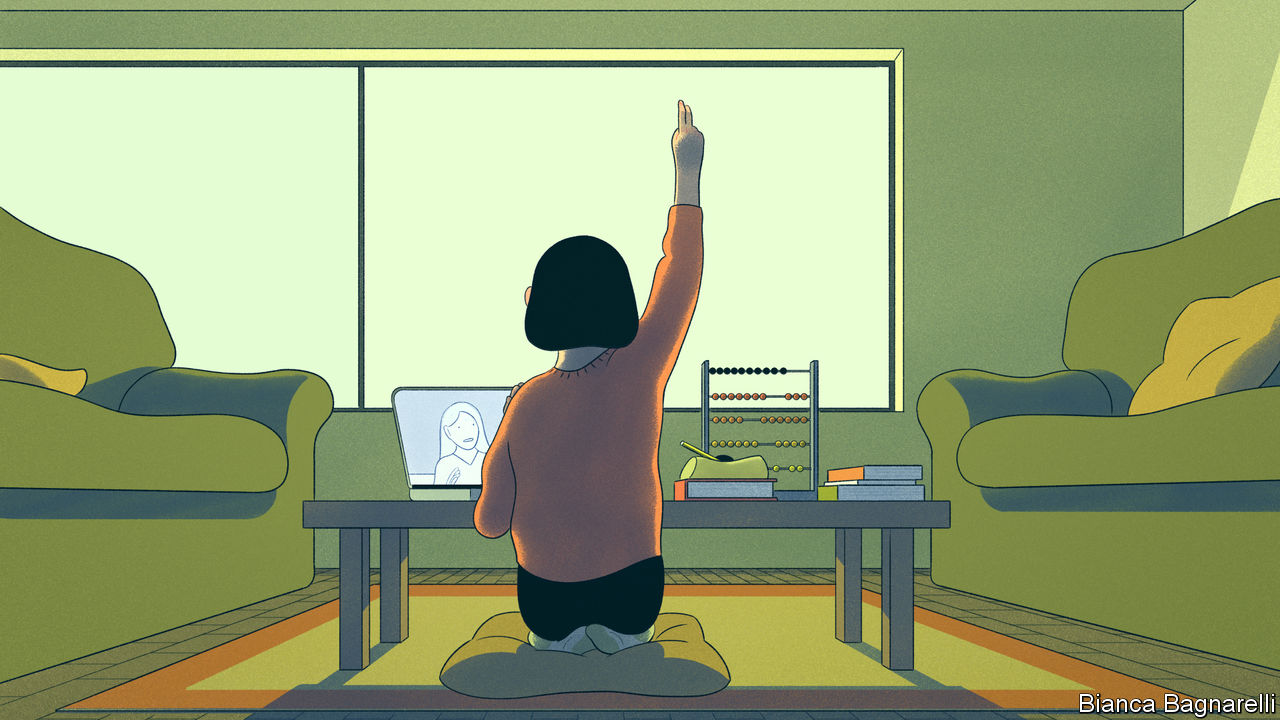Bringing Brain Science Research into the Classroom
NEUROSCIENCE | June 24, 2020
Read time: < 1 Minute
Teaching and neuroscience go hand in hand. Good teaching, that is well planned, deliberate and intentional, together with purposeful neuro-feedback, incorporated into a student’s learning program is a place to begin. A well prepared, course is one designed using Bloom’s Taxonomy, a hierarchical classification of the different levels of thinking used to develop the course objectives. The course learning objectives are what the teachers expect the students to learn by the end of the course. Bloom’s Taxonomy (levels and phases of learning) include, from lowest level to highest: (1) Knowledge; (2) Comprehension; (3) Application; (4) Analysis; (5) Synthesis; and (6) Evaluation.
In a recent article by Goodwin, G. and Dey, D. (2020). Research Matters / Elegant Simplicity in Brain Science, the authors outline how teachers might incorporate what is known about brain research into the classroom. The model proposed by Goodwin and Dey is the “information processing model”. The cognitive psychologists use the information processing model as a way to explain and illustrate mental processes. The process is often explained by using the metaphor of how a computer operates. Information is inputted into the brain the brain then organizes the information and stores it to be recovered at a later time.
An educational program with course objectives based on Bloom’s Taxonomy and implements direct and differentiated instruction, practice, modeling, hands-on experiences is an example of the implementation of the information processing model. Why does the model work? In the new book Learning That Sticks (Goodwin, Gibson & Rouleau, 2020) they describe the following six-phase model of learning and how teachers can support learning that is brain-based.
The six phases of learning described by Goodwin, et al, are, from lowest to highest: (1) Interest; (2) Commitment; (3) Focus on new learning; (4) Making sense of the learning; (5) Practice and reflection; and (6) Extension of learning.
The following diagram illustrates the connection between Bloom’s Taxonomy and Informational Processing Theory and the areas where neurofeedback strengthens the learning.
Bloom’s Taxonomy / Information Processing Theory / (Short/Long Term Memory)
Step 1 - Knowledge/Interest/Short Term Memory: Students spend most of their time taking in new information. Learning begins with the receipt of signals/information in the environment and registering the information in their short-term memory. Students then filter through the information being received and organize it by its salience, is it frightening or interesting? In order to learn the students must find the signals interesting, they must also be able to hold onto the information in their short-term memory so that it can be reorganized and sent into their long-term memory for later retrieval.
Step 2 – Comprehension/Commitment/Short Term Memory: When a student is interested in the information being presented it will remain in the short-term memory for about 30 seconds, provided that they have the attentional capacity to hold onto the information. If a student finds the information presented interesting and comprehensible, and they are able to hold onto the information, they will then process the information before committing it to long term memory. In order to process and commit the information, they must first be able to hold onto the information in order to determine its importance, meaning, and whether or not it will provide them with some form of reward in the future.
Step 3 – Application/Analyze/Short Term Working Memory: After the student has committed to the learning, they then begin to process the information in their short-term working memory for commitment to their long-term memory. In this step the student’s brain goes into action processing the information. Is the information being presented visually? Auditorily? The working memory will process the information in the “visuospatial sketchpad” for visual information, a “phonological loop” for written and spoken language, and a “central executive” that coordinates visual and verbal processing and retrieves prior knowledge when needed. (Sousa, 2016) Thus, information that is received by a student both visually and verbally, and found to be interesting and of value, is more likely to be retained and processed in the brain.
Step 4 – Analysis/Making Sense of Learning/Short Term Working Memory: A student’s ability to remember information has limitations as noted by the term “short term memory”. A student’s short-term memory can be up to about 30 seconds, thus it is necessary, especially for a student with a shorter attention span, to chunk information being presented so that the student can make sense of the information as they think about it and connect it to prior learning.
Step 5 – Synthesis/Practice and Reflection/Long Term Memory: At the synthesis level is where students are able to move learning into their long-term memory. Repetition of the information presented to the student causes a reaction in the brain wherein a substance called myelin to grow around newly formed neural pathways, helping them fire together to automate a new skill or mental connection to be entered into long-term memory. Cramming does not allow for the process of committing information into long term memory, the best way to support a student’s learning is through practice and repetition. Strategies such as re-reading, highlighting, writing summaries have been noted as being ineffective. Breaking up information to be learned into smaller parts and presented over a period of time creates a more effective learning environment.
Step 6 – Evaluation/Extension of Learning/Long Term Memory: It is a student’s long-term memory that has the functions of storage and retrieval of learned information. The more elaborately a student stores new information, the more likely they are to be able to retrieve it when needed. Therefore, in order to be able to retrieve information students need opportunities to extend and use their learning through new and real applications such as using mathematic formulas to build or bake, comparing historical events to current events, or applying what is read to what is being experienced.

References:
Goodwin, B. & Dey, D. (2020). Research matters / elegant simplicity in brain science. Educational Leadership, 7(8), 82-83.
Goodwin, B., Gibson, T., & Rouleau, K. (2020). Learning that sticks: A brain-based model for K-12 instructional design and delivery. Alexandria, VA: ASCD.
McTighe, J. & Willis, J. (2019). Upgrade your teaching: Understanding by design meets neuroscience. Alexandria, VA: ASCD.
- Liquid Software
- 555-555-5555
- liquidsoftwarellc.com
© Copyright 2026 Liquid Software L.L.C. Web Design by Top Shelf Creative Studios.



